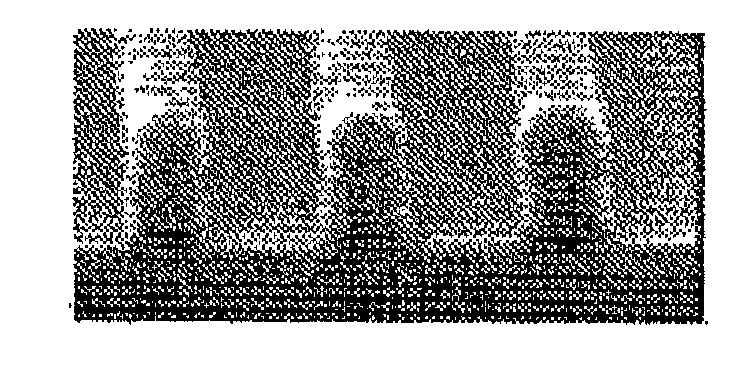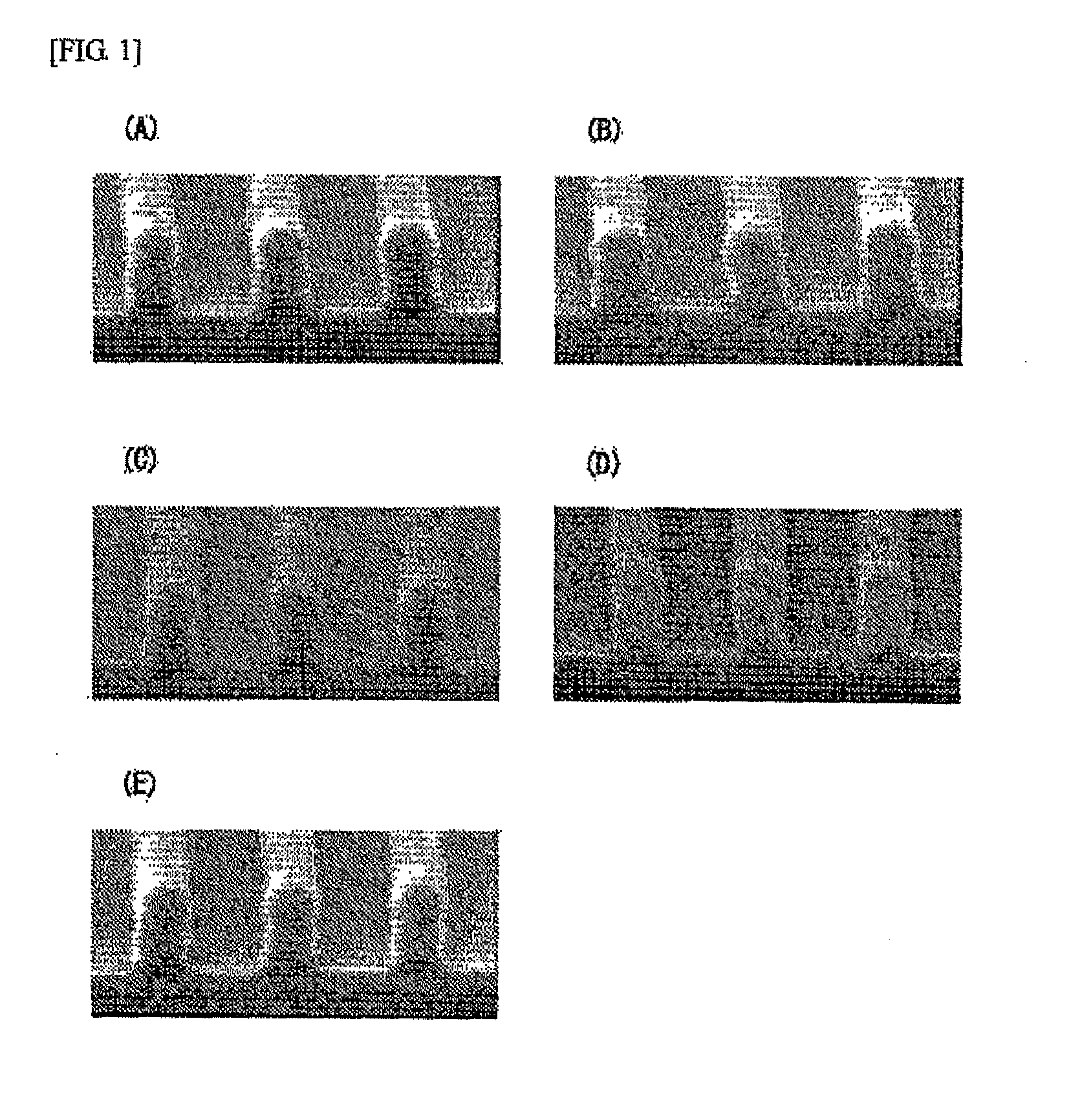Sulfur atom-containing resist underlayer film forming composition and method for forming resist pattern
a technology of resist and composition, applied in the field of composition for forming resist underlayer film, can solve the problems of odor generated during the synthesis of polymer, and achieve the effects of suppressing a cross section of resist pattern, reducing odor, and reducing odor
- Summary
- Abstract
- Description
- Claims
- Application Information
AI Technical Summary
Benefits of technology
Problems solved by technology
Method used
Image
Examples
synthesis example 1
[0038]5.0 g of monoallyldiglycidylisocyanuric acid (Shikoku Chemicals Corporation; trade name: MADGIC), 3.8 g of 3,3′-dithiodipropionic acid (Sakai Chemical Industry Co., Ltd.; trade name: DTDPA), and 0.3 g of triphenylmonoethylphosphonium bromide which is a quaternary phosphonium salt as a catalyst were dissolved in 13.8 g of propylene glycol monomethyl ether. Subsequently, the resultant solution was warmed to 120° C., followed by stirring the reaction solution in a nitrogen atmosphere for 4 hours. The odor of the raw material compounds and the odor of the reaction products were nearly at an unnoticeable level. The obtained reaction product was diluted with 23.0 g of propylene glycol monomethyl ether to prepare a vanish solution and the vanish solution was subjected to a GPC analysis. As a result of the analysis, the reaction product was found to have a weight average molecular weight of about 7,800 in terms of standard polystyrene. This reaction product has a repeating unit struct...
synthesis example 2
[0039]14.0 g of monoallyldiglycidylisocyanuric acid (Shikoku Chemicals Corporation; trade name: MADGIC), 2.6 g of monoallylisocyanuric acid (Shikoku Chemicals Corporation), 7.4 g of 3,3′-dithiodipropionic acid (manufactured by Sakai Chemical Industry Co., Ltd.; trade name: DTDPA), and 0.6 g of benzyltriethylammonium chloride which is a quaternary ammonium salt as a catalyst were dissolved in 57.3 g of propylene glycol monomethyl ether. Subsequently, the resultant solution was warmed to 120° C., followed by stirring the reaction solution in a nitrogen atmosphere for 4 hours. The odor of the raw material compounds and the odor of the reaction products were nearly at an unnoticeable level. The obtained reaction product was diluted with 40.9 g of propylene glycol monomethyl ether to prepare a vanish solution and the vanish solution was subjected to a GPC analysis. As a result of the analysis, the reaction product was found to have a weight average molecular weight of about 8,800 in term...
synthesis example 3
[0040]10.00 g of monoallyldiglycidylisocyanuric acid (Shikoku Chemicals Corporation; trade name: MADGIC), 4.98 g of ethanedithiol (Shikoku Chemicals Corporation), and 0.40 g of benzyltriethylammonium chloride which is a quaternary ammonium salt as a catalyst were dissolved in 61.52 g of propylene glycol monomethyl ether and the reaction of the resultant solution was effected under reflux for 24 hours. Among the raw material compounds (monomers), ethanedithiol, in particular, had a strong odor in comparison with other sulfur-containing compounds used in other Synthetic Examples of the present specification. The odor is due to a thiol group of ethanedithiol. A vanish solution containing the obtained reaction product was subjected to a GPC analysis. As a result of the analysis, the reaction product was found to have a weight average molecular weight of about 16,800 in terms of standard polystyrene. This reaction product has a repeating unit structure of Formula (9):
containing no disulf...
PUM
 Login to View More
Login to View More Abstract
Description
Claims
Application Information
 Login to View More
Login to View More - R&D
- Intellectual Property
- Life Sciences
- Materials
- Tech Scout
- Unparalleled Data Quality
- Higher Quality Content
- 60% Fewer Hallucinations
Browse by: Latest US Patents, China's latest patents, Technical Efficacy Thesaurus, Application Domain, Technology Topic, Popular Technical Reports.
© 2025 PatSnap. All rights reserved.Legal|Privacy policy|Modern Slavery Act Transparency Statement|Sitemap|About US| Contact US: help@patsnap.com



